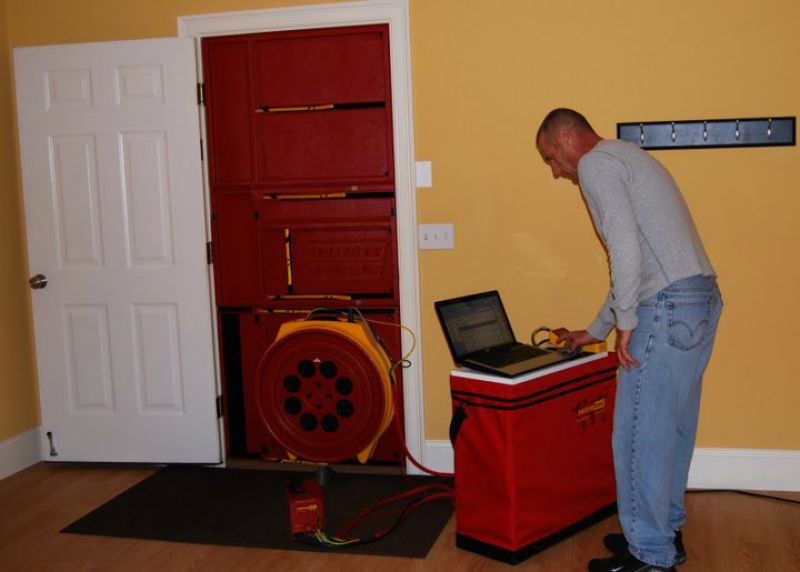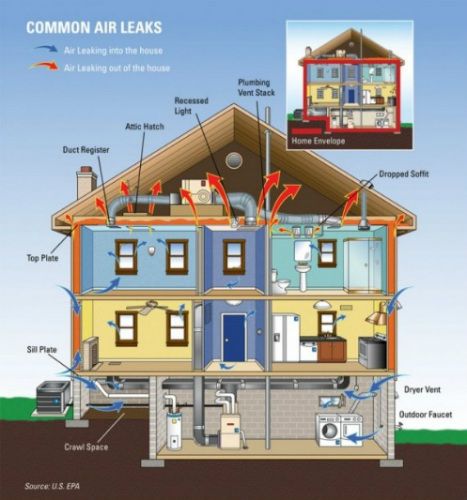Blower Door Testing
Our Tests
Tested with the Best Industry Standards
Our blower door tests are performed with a Retrotec hard panel door system. The test is performed at an accepted industry standard of (-50 Pa). This means that the entire living space is brought under a negative pressure as compared to the exterior.

Procedures to Help Improve Your Home
This “forced convection” procedure draws air out of the home through the fan and simulates the same type of pressure produced by a 20 mph wind. Finding and locating the specific points of air leakage is fundamental to correcting the problems.
Thermal Imaging
A thermal imager is considered the ultimate tool when used in combination with a blower door. The thermal camera sees the convective heat transfer being created by the blower door and produces thermal pictures that are taken in “real time.” This process makes it possible to observe and document the exact location where air is entering. The use of this precision equipment allows us to look at the sum total together with the specific areas in order to determine the most cost-effective corrections.
Air Leaks
Air leaking into our homes is a far greater problem than most people realize. The diagram below, from the U.S. EPA, illustrates where air leaks and heat loss can occur in your home.

Energy-Efficient Homes
Many homeowners believe that additional insulation means a tighter and more energy-efficient home, but this is not always true. Most insulation does not stop air from penetrating the building envelope. It is especially critical to have a continuous air barrier that has the ability to stop all direct airflow into a building.
Reduce Energy Costs
The obvious motivation for stopping air leakage is to reduce energy costs. The real issue here is not only the heat loss but the moisture vapors that are getting into the building envelope. The fact is that if air can travel into a building through gaps, so can moisture. Moisture can be costly as it degrades a structure, makes insulation less effective and introduces biological contaminants into the living environment.